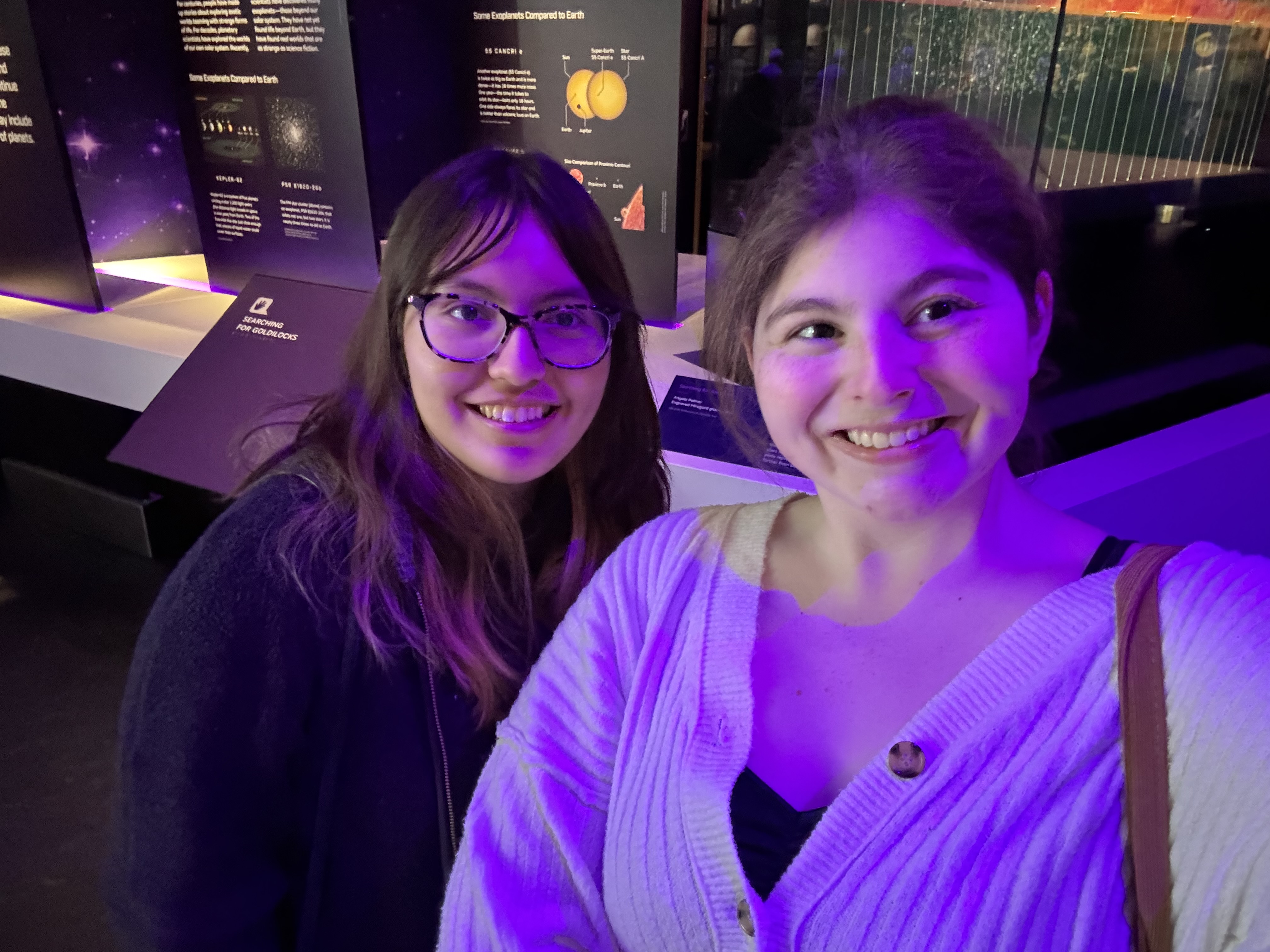Field Trip:
National Air & Space Museum (Feb. 24):

Photo of me and Kellie Boehlert
Out of the available exhibits (as of February 24 in 2024) at the National Air and Space Museum in DC, I visited three of them: One World Connected, Exploring the Planets, and Destination Moon.
In the first exhibit, One World Connected, they depicted different forms of communication and the technologies that grew with it (such as the Intelsat Network, laptops/computers, and cameras). There were early examples of media platforms like a Japanese satellite TV dish from the 1980's. On top of that there were visual representations of undersea cables that help us communicate with people across the sea via phones and telecommunication. One of the coolest pieces of technology was the WorldSpace Satellite Radio, which (to me) looked like something you would see from 'Totally Spies' or 'Kim Possible'. In order to communicate information about these objects and older pieces of technology, the exhibit used light up displays and colorful images. With all the colors and visual aids used on top of a fair amount of text, personally, I think this exhibit is meant for older elementary to early middle school aged kids. It was fairly hands on with things to touch but I would say it was not the most interactive exhibit. I found that the interactive components were not as effective in communicating information but were a good introduction for people to stop and read the information.
Then in the second exhibit, Exploring the Planets, its main focus was space exploration and travel. There are multiple signs talking about planets. Images of different thing from space, taken by the Kepler Space Telescope were shown. Plenty of other pieces of new-er technology were shown such as: Mariner Television Camera, HiRISE CCD, and the Wide Angle Camera. There was a video that was very popular with the younger kids that talked about space rovers. On top of that, there's miniature displays filled with photos and non-touchable objects (such as Babylonian Clay Tablet) that gave out relevant information. Personally, I think that this exhibit was meant for parents to take their young children (maybe early elementary and preschool age). There was a video to entertain the kids, while the parents had the opportunity to learn and read. There wasn't as much interactive content in this exhibit, mainly screen based interaction. I thought that this content was effective because the screen keeps us engaged and we can choose the pace at which we can learn information.
Finally in the last exhibit, Destination Moon, they hosted a place to learn about the moon landing and we got there. Specifically in this exhibit, it focused on the progress we made to get to the moon. There was a video going over America’s history leading up to that point, on top of the real life versions of space equipment used (like space suits and satellites). Some of these space suits included multiple different versions of the Apollo Lunar Suit. In addition to some of our inventions, there were rock specimens from the moon and images of mission control. Due to the lack of high construct color and bright colors in their interactive media, I personally think this exhibit is meant for middle schoolers and older. There was minimal interactive content. You could touch different types of moon rocks, which was cool. However, I don't think that it was informative because they were simply just cool to see and move on.
Personally, I thought they did a good job portraying astronomy. Everything was eye-catching, plus all the visuals had some form of text to explain. I saw a bunch of hands-on activities and there were videos. However, I didn't see that much brallie so all the information was not available to all visitors.


